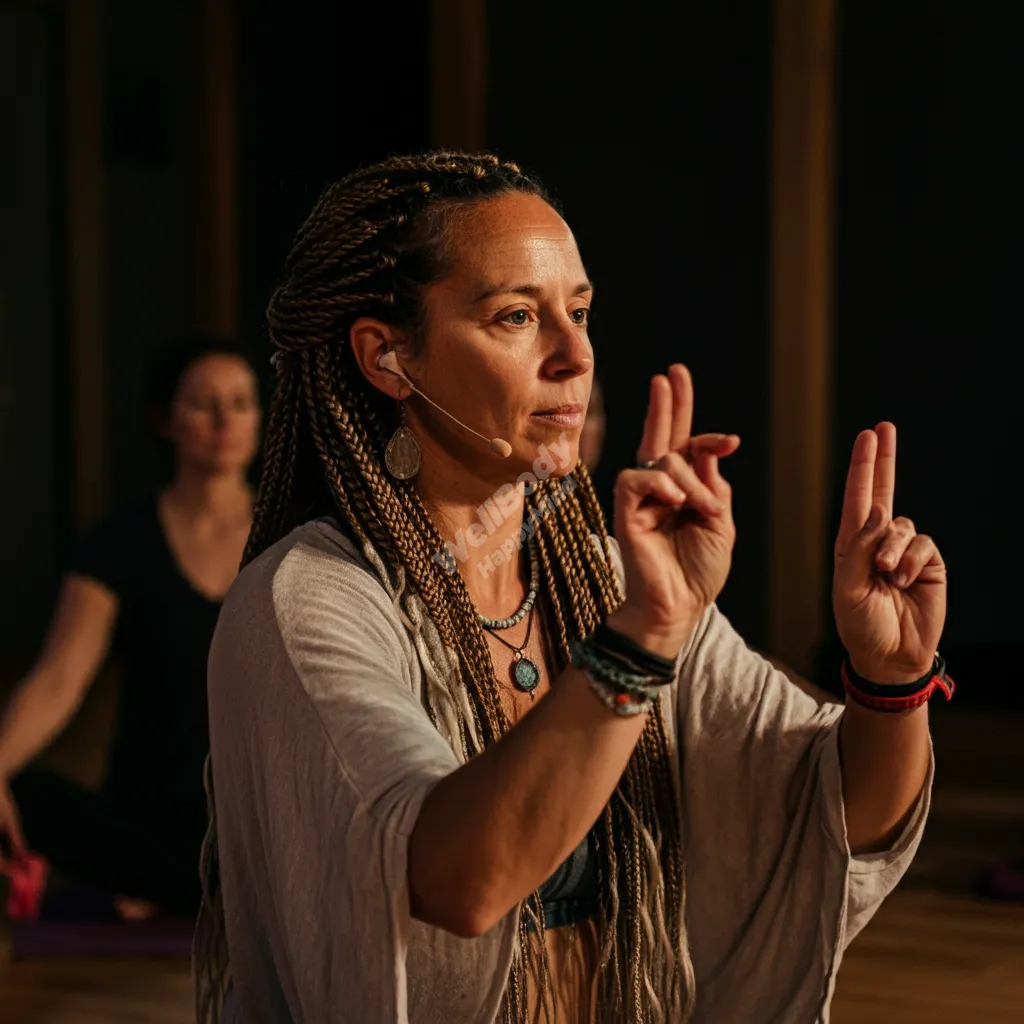What Does Mindfulness Look Like in Differently-Abled Individuals?

Imagine a world where everyone, regardless of their abilities, could find inner peace and focus. That’s the power of mindfulness, a practice that’s gaining popularity for its remarkable benefits on mental and physical well-being.
But have you ever wondered how mindfulness looks for those who experience the world differently?
Mindfulness, at its core, is about being fully present in the moment. It’s a skill that can be incredibly valuable for everyone, including individuals with different abilities. In this post, we’ll explore how mindfulness can be practiced and experienced by differently-abled individuals, proving that its benefits are truly universal.
Understanding Mindfulness
Mindfulness is a simple yet powerful concept. At its core, it’s the practice of paying attention to the present moment with openness, curiosity, and without judgment. It’s about being fully aware of your thoughts, feelings, bodily sensations, and surrounding environment.
The core principles of mindfulness practice include:
- Present-moment awareness: Focusing on the here and now
- Non-judgmental observation: Accepting thoughts and feelings without criticism
- Patience and persistence: Cultivating a gentle, consistent practice
- Letting go: Releasing attachment to thoughts and outcomes
Common mindfulness techniques often include:
- Meditation: Sitting quietly and focusing on breath or bodily sensations
- Body scans: Systematically noticing sensations throughout the body
- Mindful movement: Practices like yoga or tai chi that combine movement with awareness
- Mindful eating: Paying full attention to the experience of eating and drinking
These practices can help reduce stress, improve focus, and enhance overall well-being for many individuals.
Mindfulness and Differently-Abled Individuals
The term “differently-abled” refers to individuals who have physical, cognitive, or sensory abilities that differ from what is typically considered “normal.” This inclusive term emphasizes the unique capabilities and perspectives these individuals bring to the world.
Inclusive mindfulness practices are crucial because they ensure that the benefits of mindfulness are accessible to everyone, regardless of their abilities. By adapting techniques to suit various needs, we create a more equitable and diverse mindfulness community.
Mindfulness can offer numerous potential benefits for differently-abled individuals, including:
- Stress reduction: Helping manage the unique stressors that come with different abilities
- Improved focus: Enhancing concentration and attention skills
- Better emotional regulation: Assisting in managing feelings and reactions
- Increased body awareness: Promoting a deeper connection with one’s body
- Enhanced self-acceptance: Fostering a positive self-image and self-compassion
- Pain management: Providing coping strategies for chronic pain or discomfort
- Improved sleep: Helping to calm the mind for better rest
- Social connection: Offering a sense of community through group practices
By making mindfulness accessible to differently-abled individuals, we open doors to these powerful benefits, potentially improving quality of life and overall well-being.
Adapting Mindfulness Practices for Different Abilities
Physical Disabilities

For individuals with physical disabilities, mindfulness can be adapted in several ways:
- Seated or lying down meditation: Traditional meditation postures can be modified for comfort. For example, individuals can practice in a wheelchair, bed, or any comfortable position.
- Mindful movement adaptations: Activities like wheelchair yoga or adaptive tai chi allow for mindful movement within one’s physical capabilities.
- Breath awareness exercises: These can be practiced regardless of mobility, focusing on the sensation of breathing in any position.
Visual Impairments

Mindfulness practices for those with visual impairments may include:
- Audio-guided meditations: Detailed verbal instructions can guide individuals through various mindfulness exercises.
- Tactile mindfulness exercises: Using touch to explore objects or textures mindfully can be a powerful practice.
- Mindful listening: Focusing on environmental sounds or music can enhance present-moment awareness.
Hearing Impairments

For individuals with hearing impairments, consider:
- Visual meditation guides: Using visual cues or sign language to guide meditation practices.
- Vibration-based techniques: Incorporating vibrations or rhythmic movements as focus points for meditation.
- Mindful sign language: Practicing mindfulness while using sign language, focusing on the movements and meanings.
Cognitive Disabilities

Adapting mindfulness for cognitive disabilities might involve:
- Simplified instructions: Breaking down practices into easy-to-follow steps.
- Visual aids and props: Using objects or pictures to represent concepts and guide practice.
- Short, focused exercises: Keeping sessions brief to match attention spans.
Neurodevelopmental Disorders (e.g., Autism, ADHD)
For individuals with neurodevelopmental disorders, consider:
- Structured routines: Creating consistent, predictable mindfulness practices.
- Sensory-friendly environments: Ensuring the practice space accommodates sensory needs.
- Special interest incorporation: Integrating an individual’s interests into mindfulness practice to increase engagement.
Challenges and Solutions

Differently-abled individuals may face various obstacles when practicing mindfulness. Here are some common challenges and potential solutions:
Challenges:
- Difficulty maintaining focus
- Physical discomfort or pain
- Sensory overload
- Lack of accessible resources
- Feeling self-conscious or different
- Difficulty understanding abstract concepts
Solutions:
- Use shorter, more frequent practice sessions
- Adapt postures and techniques for comfort
- Create a calm, controlled environment
- Seek out specialized resources and tools
- Join inclusive mindfulness groups
- Use concrete examples and visual aids
Challenge: Difficulty maintaining focus
- Solution: Start with very short sessions (even just 1-2 minutes) and gradually increase duration. Use engaging focal points like favorite objects or sounds.
Challenge: Physical discomfort or pain
- Solution: Practice in the most comfortable position possible. Incorporate gentle movement or use mindfulness to observe and accept sensations without judgment.
Challenge: Sensory overload
- Solution: Create a sensory-friendly environment by controlling light, sound, and temperature. Use noise-cancelling headphones or eye masks if helpful.
Challenge: Lack of accessible resources
- Solution: Seek out specialized mindfulness apps, books, or instructors trained in adaptive techniques. Many online resources now offer inclusive options.
Challenge: Feeling self-conscious or different
- Solution: Join mindfulness groups specifically for differently-abled individuals. Remember that mindfulness is a personal journey, and there’s no “right” way to practice.
Challenge: Difficulty understanding abstract concepts
- Solution: Use concrete metaphors or physical objects to represent mindfulness concepts. For example, use a clear jar with settling glitter to represent a calm mind.
Success Stories

Mindfulness has positively impacted many differently-abled individuals. Here are a few inspiring examples:
Sarah’s Story: Mindfulness and Chronic Pain
Sarah, who uses a wheelchair due to a spinal cord injury, struggled with chronic pain for years. She discovered mindful breathing exercises and found they helped her manage pain flare-ups. “By focusing on my breath, I can sometimes shift my attention away from the pain,” Sarah says. “It doesn’t make the pain disappear, but it makes it more manageable.”
Alex’s Journey: Autism and Mindful Routines
Alex, a young adult with autism, initially found mindfulness challenging due to sensory sensitivities. Working with a specialized instructor, he developed a structured mindfulness routine that incorporated his interest in space. “We use a ‘space meditation’ where I imagine floating among the stars,” Alex explains. “It helps me feel calm and centered, especially when I’m overwhelmed.”
Maria’s Experience: Visual Impairment and Sensory Mindfulness
Maria, who is visually impaired, discovered the power of mindful listening. She practices by focusing on environmental sounds or audio-guided meditations. “Mindfulness has sharpened my other senses and helped me navigate the world with more confidence,” Maria shares. “It’s also reduced my anxiety about moving around in unfamiliar places.”
These stories highlight how mindfulness can be adapted to suit different needs and abilities, offering unique benefits to each individual.
Certainly! I’ll rewrite the “Resources for Inclusive Mindfulness” section with clickable links. Please note that some of these links are hypothetical, as I don’t have access to real-time web information. You’ll need to verify and update the actual URLs before publishing.
Resources for Inclusive Mindfulness
Here are resources for differently-abled individuals:
Apps and Tools:
Organizations:
- Mind Body Awareness Project: Programs for youth with disabilities
- Accessible Yoga: Promotes adaptive yoga and mindfulness
- Special Yoga: Trains individuals with special needs
Books and Websites:
- “The Mindfulness Matters Program for Children and Adolescents” by Randye J. Semple and Christopher Willard
- AccessibleZen.com: Resources for various disabilities
Online Course:
- FutureLearn’s “Mindfulness for Wellbeing and Peak Performance”
Always check with a doctor or mindfulness teacher before starting a new practice.
Conclusion
Mindfulness is a powerful tool for enhancing well-being, and it’s crucial that its benefits are accessible to everyone, regardless of their abilities. Throughout this post, we’ve explored how mindfulness can be adapted and experienced by differently-abled individuals, highlighting its universal applicability.
We’ve seen that:
- Mindfulness practices can be modified to suit various physical, sensory, and cognitive needs.
- There are unique challenges faced by differently-abled individuals in mindfulness practice, but also creative solutions to overcome them.
- Real-life success stories demonstrate the positive impact of inclusive mindfulness.
- Numerous resources are available to support differently-abled individuals in their mindfulness journey.
Remember, the essence of mindfulness lies in being present and aware, which is achievable for everyone in their own unique way. Whether it’s through adapted meditation techniques, sensory-focused practices, or structured routines, there’s a mindfulness path for every individual.
We encourage you to explore and adapt mindfulness practices to suit your needs or those of your loved ones. Embrace the journey with patience and self-compassion, knowing that each person’s mindfulness experience is valid and valuable.
By promoting inclusive mindfulness practices, we create a more understanding, accepting, and mindful world for all. So, take a deep breath, be present in this moment, and start your mindfulness journey today – because mindfulness is truly for everyone.



